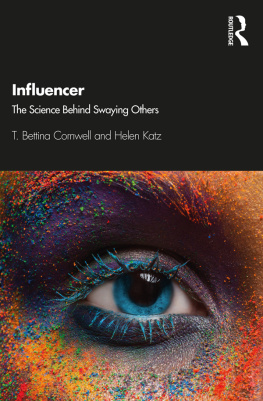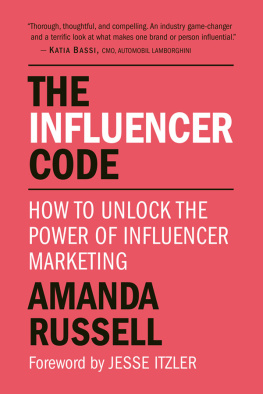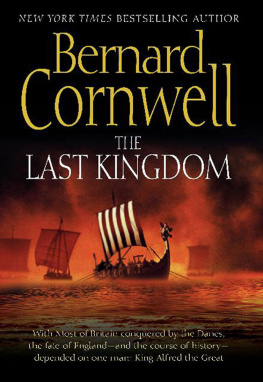1
INTRODUCTION TO INFLUENCERS
It is 7 am on a Monday morning. Your phone alarm beeps to wake you up. You lie in the bed and check your social media accounts Instagram, Facebook, Twitter. Pretty soon, you realize it is 7:30 am and youll be late to work if you dont hurry. Once out the door, you pop in your Air Pods and listen to your Spotify playlist, which helps you ignore the crowded subway. During the day in the office, you peek pretty regularly at your social media apps on the phone to make sure you are keeping up with the news, as well as your friends posts. A daily news podcast accompanies you home, and after a quick ready-to-eat dinner, you settle down to watch your new favorite streamed show on Hulu or Amazon Prime Video or Netflix. That also gives you some time to respond to some posts and text friends and family about the next weekends plans. Before you turn out the lights, you watch a few funny BuzzFeed and TikTok videos and then listen to your meditation app, the combination of which leaves you relaxed and ready to sleep.
Sounds familiar at all?
Now lets rewind, and think about that day when you were likely exposed to brand messages from Instagram, Facebook, Twitter, and maybe Spotify as well (unless you shelled out for premium, ad-free music). Also think about the posters in subway platforms, trains, escalator; elevator ads in the office; podcast sponsors; Hulu ads before and during your favorite programs; brand mentions in Netflix content; BuzzFeed, and, last but not the least, TikTok.
The estimates of how many ads or brand messages an average consumer is exposed to on a daily basis vary tremendously. Some say it is as high as 3,000 times a day! What all these marketers want to do is try to influence you, as the consumer, in some way or otherto be aware of their product, prefer it, want it (and search for it), and to talk about it with others. Ultimately, they want you to buy it and use it (and buy it again). This notion of influence is not new. It was what Lydia Pinkhams Compound was trying to do in some of the earliest newspaper ad messages in the 1870s. It was why Coca-Cola became an official Olympics sponsor starting in 1928. And it was what Procter & Gambles intent was in sponsoring the first television soap operas in the 1940s.
Todays version of influence is, in many ways, very different. Celebrities, like Kim Kardashian, use their fame and personality to influence millions of people to buy FitTea and SugarBearHair products. Regular people, like Gretchen Geraghty, are helping brands such as CVS Pharmacy, Fabletics, and Care/of Vitamins by using their influence to persuade millions like them of the best health and wellness products. During the coronavirus pandemic of 2020, even organizations became influencers. The World Health Organization (WHO) created and distributed numerous videos encouraging people to wash their hands and explaining how to do it effectively, garnering millions of followers and likes in the process. Here, we begin our discussion with influencers as defined by the Word of Mouth Marketing Association: A person or group of people who possess greater than average potential to influence due to attributes such as frequency of communication, personal persuasiveness or size of and centrality to a social network, among others.
Why do they matter? How are influencers any different from earlier methods used to persuade customers to buy a certain brand of toothpaste or cereal or car? How have influencers altered the relationship between consumers and the brands they buy or the media they use? This chapter considers the history of influencer marketing. While it seems like a new phenomenon, its roots can in fact be traced back several decades.
Once we establish the foundations of influencer marketing, we dive deeper into the role of influencers in the broader marketing ecosystem ( ).
The Foundations of Influencer Marketing
Before there was influencer marketing, brands relied on two key forms of external motivation to persuade consumers to buy their products. The first was celebrity marketing, and the second was word of mouth. Celebrity marketing, as noted earlier, dates back many decades. The idea that people respond positively to a product or service if someone famous talks about it is founded on plenty of psychological research on the power of authority in persuasion.














